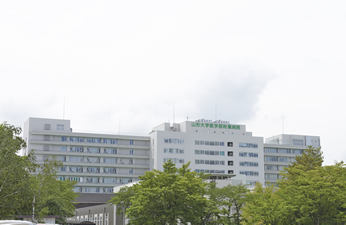- TOP
- Product
- User Reports
- Yamagata University Hospital (Yamagata Prefecture)
Yamagata University Hospital (Yamagata Prefecture)
Interviewee: Akira Konno, Chief of Drug Preparation Room, Yamagata University Hospital
Interviewer: Emika Matsuo, Sales Planning Department, Yuyama Co., Ltd.
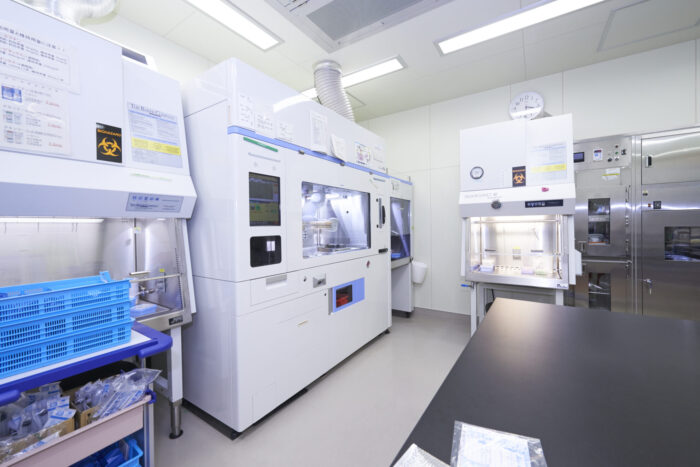
Leveraging the Power of ChemoRo to Focus on The Job at Hand
ChemoRo Anti-Cancer Drug Mixture Preparation Robot
The results of a joint study conducted by the University of Tokyo Graduate School and Yuyama in 2012 (Medical Pharmacy 2012 vol.38, No.7) revealed a 73.1% rate of anxiety concerning exposure risk by pharmacy personnel when compounding anticancer drugs. Numerous presentations on exposure connected to anticancer drug compounding at various academic conferences attended by clinical pharmacists indicate a high level of growing interest in this topic. We spoke with the Yamagata University Hospital, one of the first hospitals in Japan to introduce ChemoRo, on the background and use of this purely domestic anticancer drug mixing and preparation robot.
Tell me about how you came to introduce the ChemoRo.
The introduction of ChemoRo was intended for two reasons: to reduce the workload of pharmacists and prevent exposure. We obtained a budget for the advanced drug therapy support system which led us to consider the introduction of a chemo-compounding (anticancer drug preparation) robot.
Initially, we investigated an overseas model, but ended up going with the ChemoRo for several reasons. One was that it was an entirely domestic (Japanese) made and the second reason was that it features a double arm and can handle freeze-dried and liquid substances. Finally, the ChemoRo was more attractive due to its compact profile in the light of space restrictions.
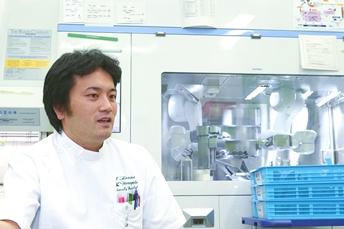
Did you have any concerns about buying the first product of the line?
I had no concerns. My excitement was greater than any possible anxiety. We decided to buy the ChemoRo based on anticipation of how much we could utilize it, after investigating an overseas manufacturer model and the ChemoRo. Now, we feel that the robot is performing beyond those expectations.
Did the load-in and installation go smoothly?
We did not have any trouble with the load-in. Because we had decided to place it at the far end of the drug compounding room, we had to move the cabinets in the front but it did not halt operations during the installation and there were no difficulties.
What kind of drugs do you use the ChemoRo for?
Gemcitabine, paclitaxel, cyclophosphamide, and ifosfamide* are the most common. We move most of the liquid chemicals with ChemoRo and sometimes use it to prepare antibodies at the hospital.
※Details of the main ChemoRo compatible drugs:
・Gemcitabine: Hospira manufactured Gemcitabine for Intravenous Infusion 1g, Hospira manufactured Gemcitabine for Intravenous Infusion 200mg
・Paclitaxel: Sawai manufactured Paclitaxel Injection Solution 30mg/5mL, Sawai manufactured Paclitaxel Injection Solution 100mg/16.7mL,
・Cyclophosphamide: Endoxan Injection Solution 100mg, Endoxan Injection Solution 500mg,
・ Ifosfamide: Ifomide Injection Solution 1g
Is there a criterion stating which chemicals the ChemoRo accommodate?
There are no definite standards, but we try to run it or anything that a Rp. can prepare with the ChemoRo. Running the ChemoRo allows us to do other work, so we either run only the ChemoRo, or have it going while we are doing manual compounding. We do not perform manual compounding in isolation.
What is the daily utilization rate for anticancer drug compounds with ChemoRo?
The daily number of anticancer drug compounds varies from 20 to 25 for inpatients and about 20 for outpatients. Antibody preparations aside from anticancer drugs average about 6 to 7 per day for outpatients. Although this can vary depending on the day of the week. We use the ChemoRo for about 25 percent of inpatient cases and 30 percent of outpatient cases. If we exclude the drugs and prescriptions that we cannot compound with ChemoRo, then the utilization rate would be just under 40 percent for in- and outpatient cases.
The utilization status is not too bad. It would be nice to boost the utilization rate, but I think we are using it sufficiently. In the words of our Deputy Pharmacy Director, Dr. Shinseki, “We are working better than expected!”
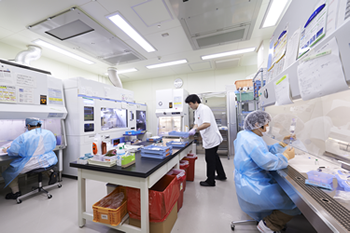
What are your goals from here?
My goal for our hospital is to raise the ChemoRo utilization rate to 50 to 60 percent. However, it is not necessary to have the robot do everything. Our hospital serves as an education facility, and we need to train personnel who can handle anticancer agents through intern and newcomer training. Performing manual work is vital for education, so it is our style not to leave everything up to a robot.
What advantages do you see in the ChemoRo, after having used it?
Ease of use. Almost anyone could operate it. When we take in interns, we often ask them to set up the ChemoRo under our instruction to give them the experience. An audio guide plays when setting up the medications and equipment, so even an intern who is unfamiliar with the operations could follow the guide and prepare it. The bar code authentication system also ensures safety and adds another level of ease of use.
Another advantage is that we can spend the time saved from running the ChemoRo elsewhere. Our department also works in the wards, so by using ChemoRo, we can find time to do our rounds around the ward. I want more time to visit outpatients and talk with them.
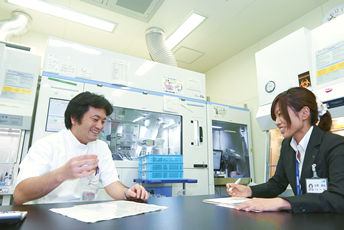
How do the nurses who use it to administer medication to the patients rate it?
Several nurses have come by to see the ChemoRo, but most of them do not know much about it, currently.
On the other hand, personnel coming to see it from other hospitals have given it quite a high appraisal. At this point, people in the same field seem more appreciative than people from other fields or professions. But I would like to see this spread to nurses and other professions.
Also, when we first introduced it, one outpatient asked his doctor if the infusion was prepared by a robot. It’s not an exposure control concern, but it seems that some patients are interested in whether the ChemoRo is being utilized or not.
Can you tell me about the inspections?
The ChemoRo keeps the weights and images, which is reassuring. However, the images are slightly hard to see. When taking an image of an empty bottle, the bottom of the bottle is hard to see because of the label. With Endoxan, for example, the remaining amount is not visible with the label left on, so we slightly cut it to make it visible for the inspections.
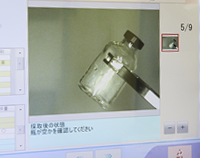
What changes have you seen following the introduction of the ChemoRo, compared to before? /h2>
At our hospital, we perform the day’s drug compounds and the following day’s inspection during the same time frame, but now we have more time for the inspection compared to before. Of course, we must concentrate on the inspection, but when we get loaded with other tasks, it is easy to get distracted. The ChemoRo does the day’s compounds for us, so we can concentrate on the inspection for the following day.
Further increasing ChemoRo’s operations will create more time to leave the cabinet area and visit the wards and outpatients.
Yamagata University Hospital (Yamagata Prefecture) is such a place.
We want to use time spent in front of the cabinet to go out and visit patients.
A hospital that serves as an educational institution for interns and newcomers training. Dr. Konno spoke with lively passion during the interview, and it was clear that he cherishes the time he spends with his patients.
I believe he has become a role model for interns and newcomer trainees that he accepts each year.
We hope that ChemoRo will continue to support the activities of medical professional who are leading future generations.
Information as of July, 2015
